Third in a series of interviews with participants at the 2009 Association of Tropical Biology and Conservation (ATBC) conference.
In Madagascar the TAMS Program (Tetik’asa Mampody Savoka, meaning “the project to bring back the forest”) is under threat due to the new government’s unwillingness to provide funding. The current government, after gaining power in a coup this year, has frozen all funds slated for the project and has yet to sign a carbon credit agreement with the World Bank which would bring much needed funding.
“It remains to be seen if the recognition or not of Madagascar’s transitional Government will lead to signing the contract with the World Bank in the near future. This is of course essential for the continuity of the project and its future,” Rainer Dolch told Monagaby.com in an interview.
The TAMS program combined reforestation of wildlife corridors and community development projects in the impoverished nation. It was being conducted in an area of unparalleled biodiversity—fourteen species of primates, more than a hundred species of frogs, 120 birds, and over 700 plants.
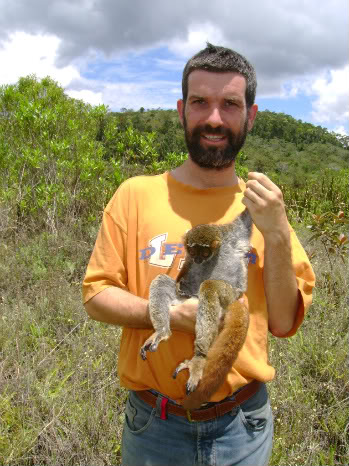 Dolch with lemur in Madagascar. |
“Reforestation is crucial in areas where connectivity has been interrupted. Reconnecting these areas is essential in order to permit animal movements and genetic exchange between populations. The corridors are important to assure viable populations of many endemic and endangered species,” explains Dolch.
Despite its importance to dwindling species, the future of the program—and the local people that have come to depend on it for their livelihood—remains to be seen.
Mongabay.com spoke with Dolch in a September interview about the TAMS project, carbon credits, and the recent government upheaval in Madagascar.
INTERVIEW WITH RAINER DOLCH
Mongabay: What does TAMS mean?
Rainer Dolch: TAMS = Tetik’asa Mampody Savoka (“The Project to bring back the forest”).
Mongabay: Why reforestation instead of protecting forest that remains, i.e. why are these corridors important?
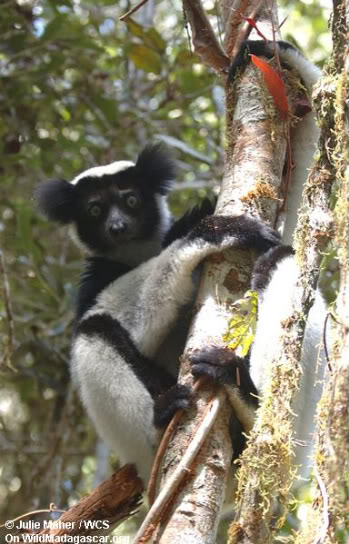 One of the ‘flagship’ species for TAMS: the Indri lemur. Photo by: Julie Larsen Maher with Wildlife Conservation Society. |
Rainer Dolch: Protecting remaining forest is of course the most important thing to do. TAMS has an “avoided deforestation” (REDD) component and both us and other organizations involved in the region focus on preserving what is there. Yet, reforestation is crucial in areas where connectivity has been interrupted. Reconnecting these areas is essential in order to permit animal movements and genetic exchange between populations. The corridors are important to assure viable populations of many endemic and endangered species.
Mongabay: What species reside in the forest?
Rainer Dolch: The forest is home to 14 species of lemurs, making it one of the areas with the highest primate diversity worldwide. The flagship species are the Indri and the Greater Bamboo Lemur, which is the rarest of all lemur species. The area is also one of the richest in terms of amphibian diversity (with more than 100 species of frog). There is more than 700 species of seed plants and more than 120 species of bird. The degree of endemicity is extremely high in all of these taxa (70-100%).
Mongabay: You have locals working on the replanting, where is the money to pay them coming from? What happens to these people once the planting is done?
Rainer Dolch: Until recently, TAMS has been supported by the Government of Madagascar, with funds coming from PE3 (The National Environmental Plan). Major donors are the World Bank and USAID. With the recent regime change in Madagascar and problems associated with it, the Government has decided to end funding for TAMS. Future funding will be coming from the trading of generated carbon credits via the BioCarbon Fund of the World Bank. Local people are being paid for the planting; they will also be rewarded with carbon credit money for letting the planted trees grow on their land. Whether the reward is financial or in terms of technical assistance leading towards more sustainable forms of agriculture, is open to the choice of the local farmers themselves.
Mongabay: In what other ways will TAMS directly aid local people?
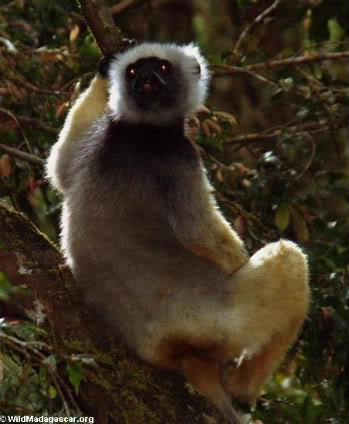 The diademed sifaka, one of fourteen lemur species in the region. Photo by: Rhett A. Butler. |
Rainer Dolch: TAMS assists people in addressing livelihood issues, basically improving and diversifying agriculture. There are agroforestry plots being created in the buffer zones to the reforestation areas. Farmers will also be assisted in terms of marketing their produce. The project assists people in securing land tenure. This is being done in the framework of the national land reform process. Titling of land will be made easier and cheaper for local farmers that participate in the “Programme National Foncier” (PNF). TAMS and PNF have agreed to give priority to people that participate in the reforestation project.
Mongabay: What role has carbon credits played in moving this project forward?
Rainer Dolch: So far, no carbon credits have been paid. The contract for trading carbon credits has to be signed by the Government of Madagascar and the World Bank. Carbon credit money is now urgently needed, given the freezing of funds within PE3.
Mongabay: Do you see this project as a model for other conservation work around the world?
 Coiled tail of the panther chameleon, another denizen of the region. Photo by: Rhett A. Butler. |
Rainer Dolch: In its theoretical approach, this project could certainly be a model for other regions around the world. However, trading carbon credits within the CDM of the Kyoto Protocol follows strict and bureaucratic rules, involves a variety of stakeholders that have differing opinions about the project’s goals and is bound to be structured more top-down than bottom-up. Trading carbon credits and paying local people for maintaining ecological services is certainly an approach that could boost conservation in many areas around the globe. I would nevertheless recommend targeting voluntary carbon markets instead of CDM, just because they have easier procedures, are less bureaucratic, and also pay more money per ton of carbon sequestered.
Mongabay: How has the current political upheaval in Madagascar affected the project? What is the current status of the project?
Rainer Dolch: I have already partly answered that above: PE3 money has been frozen, the project has no government funding at the moment. It remains to be seen if the recognition or not of Madagascar’s transitional Government will lead to signing the contract with the World Bank in the near future. This is of course essential for the continuity of the project and its future (payment for carbon credits, improving rural livelihoods in the project area with that money, etc.)
Related articles
Destruction worsens in Madagascar
(08/20/2009) Armed bands are decimating rainforest reserves in northeastern Madagascar, killing lemurs and intimidating conservation workers, despite widespread condemnation by international environmental groups.
Appalling photos reveal lemur carnage in Madagascar [warning: graphic images]

(08/20/2009) New pictures released by Conservation International depict a troubling development in Madagascar: the emergence of a commercial bushmeat market for lemurs. In the aftermath of a March coup that saw Madagascar’s president replaced at gunpoint by the capital city’s mayor, Madagascar’s reserves — especially in the northern part of the country — were ravaged by illegal loggers. Armed bands, financed by foreign timber traders, went into Marojejy and Masoala national parks, harvesting valuable hardwoods including rosewood and ebonies. Without support from the central government — or international agencies that pulled aid following the coup — there was no one to stop the carnage. But now it emerges that timber wasn’t the only target.
Lessons from the crisis in Madagascar, an interview with Erik Patel

(08/11/2009) On March 17th of this year the President of Madagascar, Marc Ravalomanana, resigned his post. This made way for Andry Rajoelina, mayor of Madagascar’s capital, to install himself as president with help from the military. The unrest and confusion that usually accompanies such a coup brought disaster on many of Madagascar’s biological treasures. Within days of Ravalomanana’s resignation, armed gangs, allegedly funded by Chinese traders, entered two of Madagascar’s world-renowned national parks, Marojejy and Masoala parks, and began to log rosewood, ebonies, and other valuable hardwoods. The pillaging lasted months but the situation began to calm down over the summer. Now that the crisis in Madagascar has abated—at least for the time being—it’s time to take stock. In order to do so, Mongabay spoke to Erik Patel, an expert on the Critically Endangered Silky Sifaka and frequent visitor to Madagascar, to find out what the damage looks like firsthand and to see what lessons might be learned.
Conservation success in Madagascar proves illusory in crisis
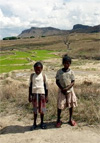
(06/12/2009) Despite the popularity he enjoyed abroad, domestic support for ousted president Marc Ravalomanana eroded rather quickly last February when he went head to head with Andry Rajoelina, the rookie mayor of Madagascar’s capital. Rajoelina rallied disparate opposition groups to the cause and soon toppled the incumbent to become, at his own proclamation, President of the “High Authority of Transition.” For the country as a whole, the results have not been encouraging. The tourism industry has shriveled to a shadow of itself, important donors have suspended non-humanitarian aid, and a power vacuum has set in in remote regions of the island, wreaking havoc on some of its most fragile and prized ecosystems.
International community calls for action against gangs’ illegal logging in Madagascar
(06/08/2009) Six nations and three conservation organizations have issued a statement calling for action against illegal logging in Madagascar’s protected areas.
Rainforest pillage continues in Madagascar
(04/16/2009) Gangs of illegal rosewood loggers continue to pillage the wildlife-rich forests of northeastern Madagascar, reports a local source.
Hopeful conservation news emerges out of Madagascar political crisis
(03/31/2009) A bit of hopeful conservation news has finally emerged out of the political crisis in Madagascar, report local sources. Wednesday representatives from several NGOs active in conservation in Madagascar met with a minister from island nation’s new government. The minister said his top priority was putting an end to illegal logging that emerged when rangers abandoned their posts and armed gangs moved into protected areas in the wake of the political crisis.
Conservation groups condemn ‘open and organized plundering’ of Madagascar’s natural resources
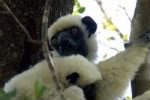
(03/30/2009) Eleven conservation organizations—including WWF, CI, and WCS—have banded together to condemn logging in Madagascar’s world renowned parks during a time of political crisis. Taking advantage of the turmoil after interim president Andry Rajoelina took control of the country in a bloodless coup from former president Marc Ravalomanana on March 17th, pristine forests have been plundered for valuable wood, wildlife trafficking has increased, and illegal mining operations have begun say the conservation organizations.
Scramble to log Madagascar’s valuable rainforest trees in midst of crisis
(03/23/2009) Armed gangs are logging rosewood and other valuable hardwoods from Marojejy and Masoala parks in Madagascar following abandonment of posts by rangers in the midst of the island nation’s political crisis, reports marojejy.com and local sources.
Political turmoil in Madagascar threatens lemurs, parks

(03/19/2009) Political turmoil in Madagascar has wrecked the country’s emerging ecotourism industry and is now threatening to undo decades of conservation work. Conservation in Madagascar is highly dependent on income from tourism. Half of park entrance fees are returned to communities living in and around protected areas. Without this source of income, locals in some areas may turn to conservation areas for timber, fuelwood, agricultural land, and wildlife as food and for export.
Nickle mine in Madagascar may threaten lemurs, undermine conservation efforts

(01/21/2009) One of the world’s largest nickel mines will have adverse impacts on a threatened and biologically-rich forest in Madagascar, say conservationists. The $3.8 billion mining project, operated by Canada’s Sherritt, will tear up 1,300 to 1,700 hectares of primary rainforest that houses nearly 1,400 species of flowering plants, 14 species of lemurs, and more than 100 types of frogs. Many of the species are endemic to the forest. While Sherritt says on its web site that is working to minimize its environmental impact, including moving endangered wildlife, replanting trees, and establishing buffer zones near protected areas, conservationists say that efforts are falling short.













